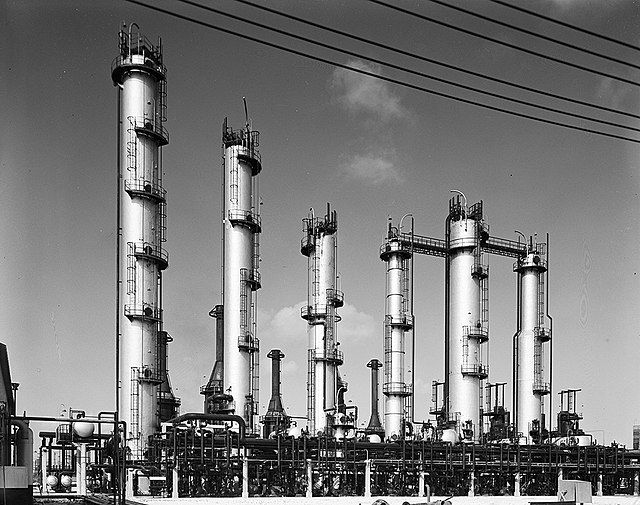The United States' Nuclear Future
- Sienna Arrobio
- Apr 3, 2023
- 3 min read
Since 1945, the scientific practice known as fission (the harnessing of heat energy from splitting atomic particles) single-handedly transformed modern energy production. The implementation of this phenomenon unlocked new capabilities for the clean creation and collection of heat energy that was later performed on massive scales in nuclear power plants. This energy source has been in the background of international power generation for years. However, it is now being re-evaluated for its zero emission capabilities.
The creation and harnessing of nuclear energy can be traced back to a single compound: uranium-235. This isotope is one of the most used in the nuclear energy space due to its tendency to absorb loose neutrons, creating fission energy. Therefore, due to the power these isotopes hold, the global uranium-235 supply is tracked and measured by international organisations like the UN’s International Atomic Energy Agency (IAEA) along with the European Atomic Energy Community. (EURATOM) However, due to these elements' “weapon grade” composition, negative associations continue to taint global perspectives on nuclear energy production, linking it with mass destruction.
Although organisations like the U.S.’s Office of Nuclear Energy have shown, Small Modular Reactors (SMRs) offer the potential to deliver consistent, affordable, and sustainable energy. According to the Office of Nuclear Energy, SMRs offer lower initial capital investment, greater scalability, and flexibility for locations unable to accommodate larger nuclear reactors. For instance, SMRs can reduce a power plant's investment due to their smaller costs of plant capital. Additionally, its capacity to provide power to countries with poor infrastructure and serve as potential replacements of fossil fuel plants are real selling points for the pro-nuclear agenda. Therefore, legislators and environmentalists support the creation of SMRs due to their net zero production of greenhouse gases. Finally, concluding the SMR agenda are newly implemented safety methods which protect power plants from foreign infiltrative threats, while supporting the reactors' use of non-water coolants. This development only further propels the nuclear argument by proving to effectively deposit plutonium, while minimising waste.

Although the nuclear energy response seems like an answer to global energy production, it comes with conditions. For instance, as a result of international uncertainty caused by tensions in Ukraine, countries like the U.S. have taken nationally defensive energy approaches in efforts to cease national reliance on Russian energy. As a result, Russia's control over Ukraine and Europe’s largest nuclear power plant, Zaporizhzhya (which provides half of all Ukraine's power) drove the U.S. to view Russian control as a direct attack on international security. Henceforth, the U.S., took legislative action and shifted energy production domestically as a matter of protection.
Therefore, the continuation and expansion of the U.S.’s use of nuclear energy ensues. After all, nuclear power has provided about 19% of all U.S. electricity since 1990, which suggests that it is vital to the U.S.’s green energy agenda. For example, legislative action as of 15 February 2023 exemplifies initiatives made by senators Joe Manchin, John Bosso, and James Risch to establish new governmental support for nuclear programs. Henceforth, Bill S.452’s recent filing encourages the U.S. Secretary of Energy to establish the Nuclear Fuel Security Program. This action will direct the U.S. Department of Energy (DOE) to establish an onshore nuclear fuel program, which will decouple the US from Russia's uranium supply. This therefore does not impact the development or operation of U.S. reactors. As Senator Risch agrees that “enriched uranium is key to unlocking potential for clean and reliable nuclear energy,” this Bill will change U.S. diplomatic relations and foreign policy by reducing international dependence on Russian uranium. Hence, this Bill will simultaneously disrupt Russia's energy monopoly and challenge the U.S. to find alternate sources to sustain nuclear plants.
In conclusion, Bill S.452’s potential establishment of the NFSA program will result in the reduction of U.S. reliance on Russian uranium, while invigorating in-house uranium production. As Senator Manchin states: “No matter what Russia does, the U.S. should always be ready and able to supply nuclear fuel for ourselves and our friends and allies.” Furthermore, as the international stage remains ridden with warfare and political violence, national uncertainty stimulates countries like the U.S. to take physical and legal action, like Bill S.452, to protect American national interest.
Therefore, the U.S.'s sceptical view of foreign actors' energy intentions catalysed legislative foci to shift and prioritise internal change. The implementation of legal safeguards like Bill S.452 means that American protectionism and fulfilment of energy goals remain core concerns for the present and future establishment of U.S. energy policy.
Image via Flickr.



